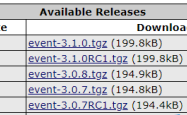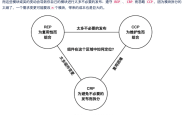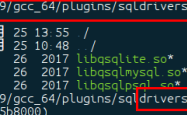PHP实现创建一个RPC服务操作示例
本文实例讲述了PHP实现创建一个RPC服务操作。分享给大家供大家参考,具体如下:
RPC全称为Remote Procedure Call,翻译过来为"远程过程调用"。主要应用于不同的系统之间的远程通信和相互调用。
比如有两个系统,一个是PHP写的,一个是JAVA写的,而PHP想要调用JAVA中的某个类的某个方法,这时候就需要用到RPC了。
怎么调?直接调是不可能,只能是PHP通过某种自定义协议请求JAVA的服务,JAVA解析该协议,在本地实例化类并调用方法,然后把结果返回给PHP。
这里我们用PHP的socket扩展来创建一个服务端和客户端,演示调用过程。
RpcServer.php代码如下:
- <?php
- class RpcServer {
- protected $serv = null;
- public function __construct($host, $port, $path) {
- //创建一个tcp socket服务
- $this->serv = stream_socket_server("tcp://{$host}:{$port}", $errno, $errstr);
- if (!$this->serv) {
- exit("{$errno} : {$errstr} \n");
- }
- //判断我们的RPC服务目录是否存在
- $realPath = realpath(__DIR__ . $path);
- if ($realPath === false || !file_exists($realPath)) {
- exit("{$path} error \n");
- }
- while (true) {
- $client = stream_socket_accept($this->serv);
- if ($client) {
- //这里为了简单,我们一次性读取
- $buf = fread($client, 2048);
- //解析客户端发送过来的协议
- $classRet = preg_match('/Rpc-Class:\s(.*);\r\n/i', $buf, $class);
- $methodRet = preg_match('/Rpc-Method:\s(.*);\r\n/i', $buf, $method);
- $paramsRet = preg_match('/Rpc-Params:\s(.*);\r\n/i', $buf, $params);
- if($classRet && $methodRet) {
- $class = ucfirst($class[1]);
- $file = $realPath . '/' . $class . '.php';
- //判断文件是否存在,如果有,则引入文件
- if(file_exists($file)) {
- require_once $file;
- //实例化类,并调用客户端指定的方法
- $obj = new $class();
- //如果有参数,则传入指定参数
- if(!$paramsRet) {
- $data = $obj->$method[1]();
- } else {
- $data = $obj->$method[1](json_decode($params[1], true));
- }
- //把运行后的结果返回给客户端
- fwrite($client, $data);
- }
- } else {
- fwrite($client, 'class or method error');
- }
- //关闭客户端
- fclose($client);
- }
- }
- }
- public function __destruct() {
- fclose($this->serv);
- }
- }
- new RpcServer('127.0.0.1', 8888, './service');
RpcClient.php代码如下:
- <?php
- class RpcClient {
- protected $urlInfo = array();
- public function __construct($url) {
- //解析URL
- $this->urlInfo = parse_url($url);
- if(!$this->urlInfo) {
- exit("{$url} error \n");
- }
- }
- public function __call($method, $params) {
- //创建一个客户端
- $client = stream_socket_client("tcp://{$this->urlInfo['host']}:{$this->urlInfo['port']}", $errno, $errstr);
- if (!$client) {
- exit("{$errno} : {$errstr} \n");
- }
- //传递调用的类名
- $class = basename($this->urlInfo['path']);
- $proto = "Rpc-Class: {$class};" . PHP_EOL;
- //传递调用的方法名
- $proto .= "Rpc-Method: {$method};" . PHP_EOL;
- //传递方法的参数
- $params = json_encode($params);
- $proto .= "Rpc-Params: {$params};" . PHP_EOL;
- //向服务端发送我们自定义的协议数据
- fwrite($client, $proto);
- //读取服务端传来的数据
- $data = fread($client, 2048);
- //关闭客户端
- fclose($client);
- return $data;
- }
- }
- $cli = new RpcClient('http://127.0.0.1:8888/test');
- echo $cli->hehe();
- echo $cli->hehe2(array('name' => 'test', 'age' => 27));
然后分别运行上面两个脚本(注意,php要添加环境变量)
- > php RpcServer.php
- > php RpcClient.php
结果如下:


Test.php代码如下:
- <?php
- class Test {
- public function hehe() {
- return 'hehe';
- }
- public function hehe2($params) {
- return json_encode($params);
- }
- }
目录结构如下:

上面我们自定义的协议,可以随意修改,只要是客户端和服务端两边能够统一并能解析。
客户端通过请求服务端,把要调用的类,方法和参数传递给服务端,服务端去通过实例化调用方法返回结果。
希望本文所述对大家PHP程序设计有所帮助。
原文链接:https://www.cnblogs.com/jkko123/p/6574808.html
1.本站遵循行业规范,任何转载的稿件都会明确标注作者和来源;2.本站的原创文章,请转载时务必注明文章作者和来源,不尊重原创的行为我们将追究责任;3.作者投稿可能会经我们编辑修改或补充。











